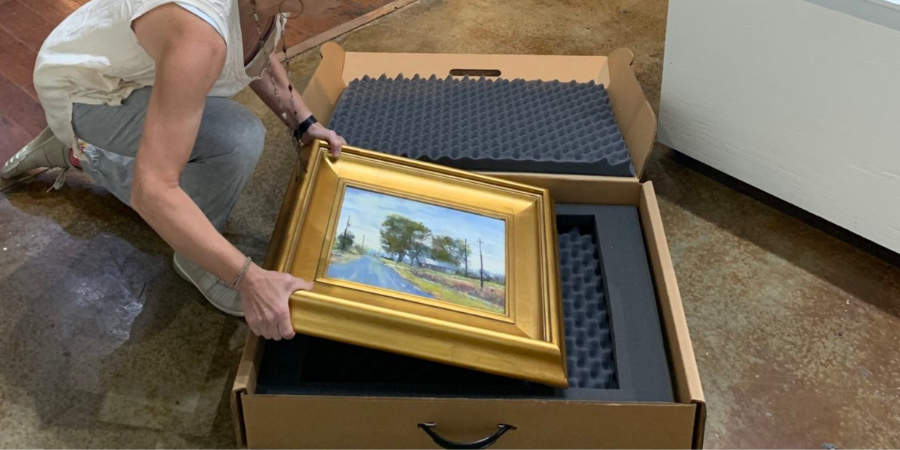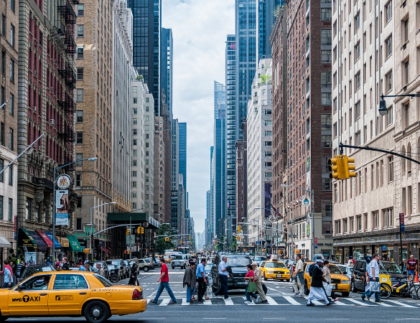
Moving valuable, fragile items like artwork requires special care to ensure they arrive safely. This guide offers expert tips on packing artwork for moving, helping you protect these treasures from damage. Drawing from museum-level practices, such as those used by the Getty, can also be beneficial for preserving artwork. For more on professional art preservation, visit the Getty Museum’s Conservation Overview.
Why Properly Packing Artwork is Crucial
Artwork often holds sentimental value and is a reflection of your personal style. Fragile by nature, art pieces like paintings, drawings, and sculptures are vulnerable to damage during the moving process. Properly wrapping and packing artwork helps prevent these issues, ensuring each piece reaches its destination in pristine condition.
Essential Packing Materials for Moving Artwork
Gathering the right materials is the first step to keeping your artwork safe. High-quality supplies ensure your artwork remains secure throughout the move. Here’s what you’ll need:
- Glassine Paper: This acid-free paper protects against moisture, dust, and smudges.
- Bubble Wrap: Essential for providing layers of protection around frames and delicate items like sculptures.
- Cardboard Corner Protectors: Foam or cardboard corner protectors are a must for shielding frame edges.
- Painter’s Tape: Ideal for securing packing materials without leaving residue.
- Moving Blankets: Thick blankets add an extra layer of protection for large or heavy pieces.
- Cardboard or Wooden Crates: Specialized crates keep artwork secure during transport.
- Packing Tape: Keeps boxes and wrapping materials tightly sealed.
- Packing Paper: Fills empty spaces in boxes, preventing artwork from shifting.
Step-by-Step Guide to Packing Paintings and Framed Art
Framed paintings and prints are particularly sensitive to damage during a move. Here’s how to protect them:
Step 1: Use Cardboard Corner Protectors
Start by protecting the corners of your artwork. Foam or cardboard corner protectors provide a buffer for frame edges, which are prone to damage. This simple step is essential when moving delicate items, as it helps absorb shocks.
Step 2: Wrap in Glassine Paper or Plastic
Next, wrap each painting or print in glassine paper, an acid-free material that protects your art from dust and moisture. For larger pieces, you can use breathable plastic sheeting to avoid moisture buildup.
Step 3: Add Bubble Wrap for Cushioning
With your artwork wrapped in protective paper, add a layer of bubble wrap to create a cushion that absorbs shocks. Pay extra attention to the front and back of the frame. Secure the bubble wrap with packing tape, and take care to prevent the tape from contacting the artwork directly.
Step 4: Choose the Right Box or Crate
Choosing an appropriate box or crate is essential. For smaller framed pieces, use a flat, mirror, or artwork box slightly larger than your frame. For larger pieces or heavy artwork, opt for custom wooden crates for maximum protection.
Fill any empty spaces with packing paper to prevent shifting. Seal the box securely with tape, and label all sides as "Fragile" to ensure careful handling.
How to Pack Sculptures and Oddly Shaped Art
Packing sculptures and other uniquely shaped art pieces can be challenging. Here’s how to protect these delicate items:
- Wrap with Bubble Wrap: Gently wrap the whole sculpture in several layers of bubble wrap. Focus on delicate areas like arms or protrusions.
- Box with Padding: Select a sturdy box or custom crate that properly fits the sculpture, allowing space for padding. Add a layer of packing paper or foam at the bottom to provide cushioning.
- Double-Box for Extra Protection: For extremely fragile sculptures, consider double-boxing. Place the sculpture in a padded box, then nest this box inside a slightly larger one with extra padding between the boxes.
- Label as Fragile: Mark the box as "Fragile" and "This Side Up" to guide movers during transport.
Additional Tips for Moving Fragile Art and Valuable Items
Here are a few extra tips to ensure your artwork is fully protected during the move:
- Avoid Stacking: Never stack artwork or sculptures in the moving truck. Always keep them upright or in a designated spot to prevent crushing.
- Climate Control: If possible, opt for a climate-controlled moving truck to protect against temperature fluctuations and humidity.
- Consider Professional Art Movers: Their expertise can be worth the investment.
- Insure your art by ensuring your moving insurance covers valuable items to protect yourself in case of damage.
Conclusion: Move Your Artwork with Confidence
By packing each item with the right materials, you can protect your treasures. Whether you’re moving artwork, framed prints, or sculptures, these expert tips will protect your art and keep it safe.









